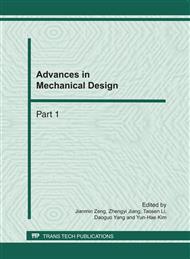p.1343
p.1348
p.1352
p.1358
p.1362
p.1368
p.1374
p.1378
p.1383
The Numerical Simulation and Experiment on Temperature Field in ICF Driver’s Target Building
Abstract:
The spatial temperature distribution in the target range of the ICF driver is one of the key factors, which affects the precision optical components and equipment for normal operation. Application of the basic theory of heat transfer, this paper has discussed the fluid motion mathematical model in ICF driver middle target range. With the aid of finite element analysis software FLUENT, the temperature Numerical Analysis Model has been established. In accordance with assuming the numerical simulation boundary condition, spatial temperature field distribution in the target range intermediate level has calculated. The results indicate that the target range intermediate level temperature field is uniform basically. The temperature fluctuation scope is in a tiny range around 23°C about in the entire space. Although the maximum gradient of temperature achieves 1.2°C in existence heat source region, it is in the range of temperature indicators. This indicates that the present HVAC system can satisfy the request. By analyzing, the results of numerical analysis are in good agreement with experimental results, because the error is only 0.2%.
Info:
Periodical:
Pages:
1362-1367
Citation:
Online since:
February 2011
Authors:
Keywords:
Price:
Сopyright:
© 2011 Trans Tech Publications Ltd. All Rights Reserved
Share:
Citation:


